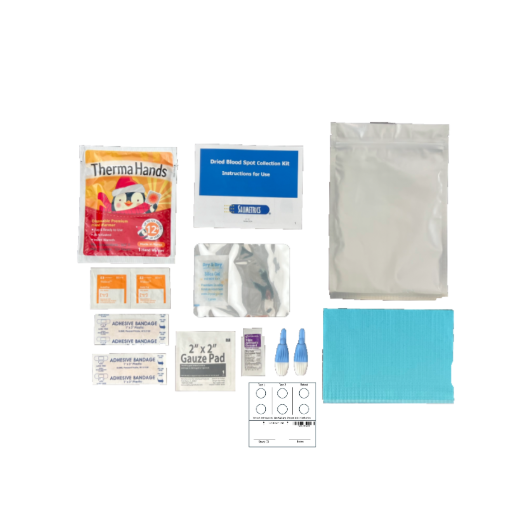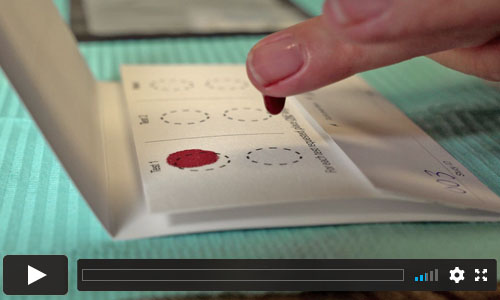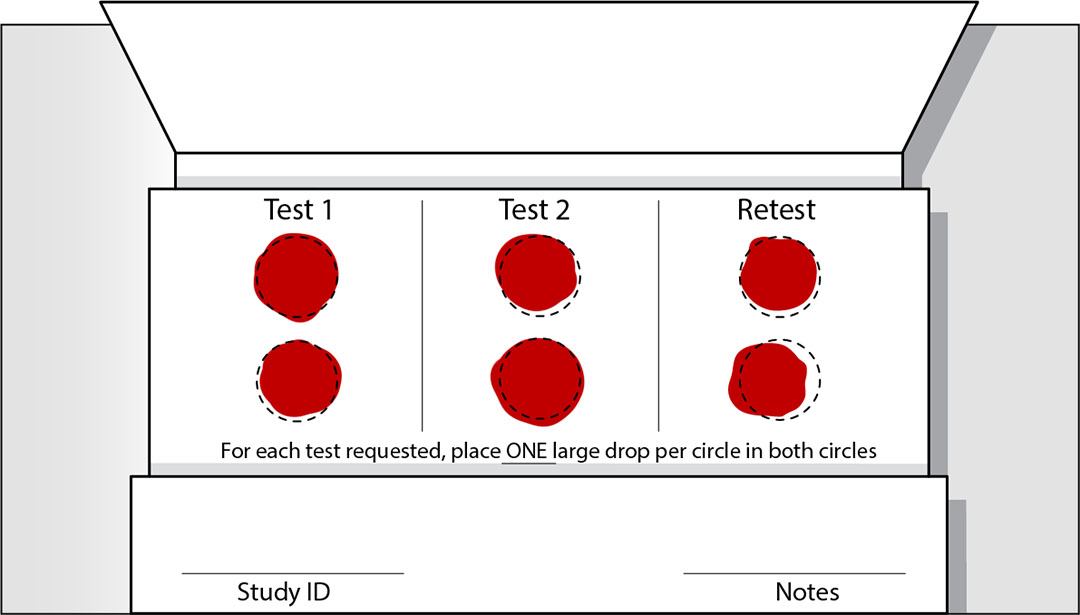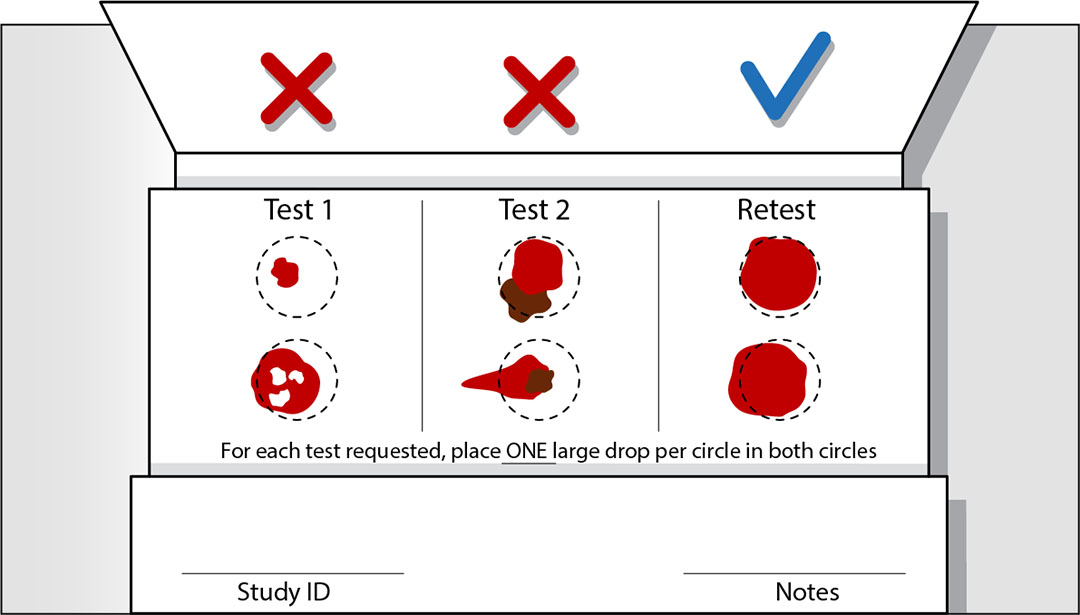Dried Blood Spot Collection Handbook
Often considered a scientific collaborator, Salimetrics stands by investigators in support of their specific aims. From academic researchers, industry leading pharmaceuticals, contract research organizations and key opinion leaders, to students and beginning researchers, Salimetrics collaborates with investigators in both the academic and diagnostic fields across many scientific disciplines. We help researchers be successful. We help them incorporate the best methods, and that helps them be instrumental in revealing a new discovery, and becoming the next generation of key opinion leaders in their respective fields. We will always be committed to building and maintaining long-lasting relationships with investigators interested in pushing the scientific knowledge boundaries.
Learn more about Salimetrics CoreLab+ services, global partnerships, and read more about our commitment to supporting better research here: https://salimetrics.com/company/
About Salimetrics Collection Devices
Correct biospecimen collection is critical for obtaining consistent, accurate results. Salimetrics is committed to setting a global standard for collection devices and techniques, while also developing innovative methods to improve participant compliance. Our biosample collection devices are carefully engineered and rigorously tested to reduce or eliminate variability, ensuring reliable results across diverse participant groups. Not all collection devices are the same—Salimetrics collection devices are designed, manufactured and validated to work seamlessly with all of our assays and laboratory services, and we provide clear guidance on which device is best suited for your study’s specific analytes.
Learn more about Salimetrics’ Dried Blood Spot Collection Packs.
Introduction
This handbook provides essential guidance for the collection, processing, storage, and shipment of dried blood spot (DBS) samples. Designed for both new and experienced researchers, it includes step-by-step instructions, best practices, and troubleshooting tips to help ensure sample integrity and minimize pre-analytical errors. By standardizing DBS procedures across teams and sites, it supports the collection of consistent, high-quality samples for downstream analysis. The handbook also addresses labeling, documentation, and storage offering practical solutions to common field challenges—ultimately promoting reliable data collection and adherence to study protocols in DBS-based research.
Accurate and consistent DBS collection is essential for ensuring reliable results and maintaining analyte integrity. Proper collection techniques such as obtaining adequate blood volume, using the correct lancet method, allowing samples to dry thoroughly, and maintaining a clean environment-support the generation of high-quality, usable samples and trustworthy data. Adhering to standardized procedures helps ensure consistency, minimize variability, and preserve biomarker stability across sites and timepoints.
To assist investigators in maximizing the integrity of their saliva samples, we offer the following advice. However, researchers should also be aware that;
-
- Knowledge about dried blood spot testing is rapidly growing and being revised. The technical team at Salimetrics maintains the latest information and provides Ask an Expert support as part of our mission to support the best bioscience.
- We advise consulting the literature on the analytes to be measured, and when the available literature appears inadequate, we strongly recommend a pilot study. It is ultimately each investigator’s responsibility to make decisions about the best methods to use for their specific study.
- For an additional discussion and current updates, we recommend signing up for Biobehavioral Research Newsletter.
What to Consider Before Collecting Dried Blood Spot (DBS) Samples
Sample Volume and Frequency
- For Cytokines/CRP/HbA1c (duplicate testing): A minimum of two full, well-sized spots is required, with an additional spot recommended for potential retesting (total of three spots).
- For more than three biomarkers: It is recommended to fill all six spots on the DBS card to ensure sufficient sample volume for testing and any potential retests.
Each spot should be fully filled for accurate analysis.
Participant Population and Vulnerable Groups
Children and the elderly may require modified approaches to ensure safe, successful, and respectful dried blood spot (DBS) collection. The following tips can help minimize discomfort, reduce stress, and improve sample quality in these populations.
Children:
- Preparation:
- Caregiver Involvement: Always involve parents or guardians in preparing and comforting the child.
- Simple Explanation: Use age-appropriate language (e.g., “We’re going to do a tiny finger pinch that gives a small drop of blood”).
- Demonstration Tools: Use dolls, cartoons, or videos to show what will happen.
- Distraction Aids: Toys, phones, songs, or storytelling can help during the prick and drying time.
- Technique Modifications:
- Preferred Fingers: Use the ring or middle finger for children over one year old.
- For infants under six months, a heel stick may be required.
- Comfort Measures:
- Numbing Options: Consider topical numbing agents if permitted by protocol and time allows.
- Warm-Up: Warm hands well to ensure quick blood flow.
- Reassurance: Praise the child before, during, and after collection. Offer small rewards or stickers afterward.
Elderly Adults:
- Preparation:
- Thorough Explanation: Older adults may need more time or repeated instructions; confirm their understanding.
- Mobility and Accessibility: Ensure a comfortable, well-supported seated or lying position during collection.
- Technique Modifications:
- Hand Warming: Warming is essential, as older adults often have reduced peripheral circulation.
- Skin Fragility: Be gentle with skin preparation and apply post-prick pressure carefully to avoid bruising.
- Vision and Dexterity Issues: Provide assistance or caregiver support for self-collection, especially when sealing cards or applying pressure.
Participant Burden and Sampling Frequency Considerations
| Sampling Frequency | Impact on Adherence | Considerations |
| Single collection | High adherence | Simple instructions; minimal burden. |
| Weekly or biweekly | Moderate–high adherence | Sustainable for most participants with clear scheduling tools. |
| Daily | Variable; declines over time | Increases burden. May lead to missed samples if not well-supported. |
| Multiple times/day | High dropout risk; requires strict compliance | Only recommended with strong motivation, frequent reminders, and incentives |
Preparing for Dried Blood Spot (DBS) Collection
Environmental setup – In-Clinic and At-Home Collection:
- Clean Workspace: Ensure a sanitary, well-lit, and flat surface for placing materials. Avoid collecting samples in high-humidity environments.
- Materials Checklist: Include the DBS participant kit, collection card labeled with participant ID, instructions, and/or visual guide.
- Sample Drying Area: Place the DBS card on a dry, elevated surface (e.g., a paper towel on a counter) and allow it to air dry on a flat surface (horizontally) for at least 2–4 hours (4 hrs minimum is highly recommended). Avoid touching the blood spots or placing the card in direct sunlight or near moisture.
- Quiet Environment: Encourage participants to remain calm and seated during collection.
How to Collect Dried Blood Spots (DBS)
 To ensure the integrity of dried blood spot (DBS) samples, strict sterility and quality control measures must be followed throughout the collection process.
To ensure the integrity of dried blood spot (DBS) samples, strict sterility and quality control measures must be followed throughout the collection process.
- Use only sterile, single-use lancets and avoid direct contact with the filter paper.
- Collect free-flowing blood directly onto the card, ensuring that the spots are uniformly filled without smearing or layering.
- Allow the cards to air dry for at least 3–4 hours on a clean, horizontal surface, protected from heat, moisture, and contamination.
- Once dry, store the cards in gas-impermeable bags with desiccants.
- Proper labeling, secure packaging, and controlled storage or shipping conditions are critical to maintaining sample quality.
- Upon receipt in the lab, samples should be inspected for completeness, dryness, and any signs of contamination or damage.
Materials Needed:
Best Practices for DBS Collection
Guidelines for optimal blood flow: To promote optimal blood flow during DBS collection, ensure the participant is well-hydrated, relaxed, and warm hands using warm water, a hand warmer, or by rubbing their hands together. Select the middle or ring finger and massage from the palm to the fingertip. Position the hand below heart level on a stable surface to aid circulation. After puncturing with a sterile lancet, allow blood to flow freely by applying gentle, rhythmic pressure near the site. Avoid excessive squeezing, as it may dilute the sample with tissue fluid and affect quality.
Proper lancet use & biohazard precautions: Follow safety protocols to protect both participants and collector. Use sterile, single-use lancets and dispose of them in a sharp container. Never reuse materials and treat all blood as potentially infectious. Handle cards by the edges and discard contaminated items in biohazard waste. These practices reduce exposure risk and maintain a safe collection environment.
Basic DBS Sample Collection Workflow
- Clean hands
- Prick finger with lancet
- Fill the appropriate number of “spots” or circles
- Clean and bandage finger
- Air dry sample card for a minimum of 2-4 hrs (4+ hrs recommended)
- Seal card in protective pouch before return shipping
Read the Step-by-Step DBS Sample Collection Instructions
Or – Watch the DBS Sample Collection Instruction Video:
Number of Spots to Collect
For Cytokines/CRP/HbA1c (duplicate testing): A minimum of two full, well-sized spots is required, with an additional spot recommended for potential retesting (total of three spots).
For more than three biomarkers: It is recommended to fill all six spots on the DBS card to ensure sufficient sample volume for testing and any potential retests.
Each spot should be fully filled in for accurate analysis, similar to the example below:
Post-Collection Instructions
Drying and Storing DBS Cards
- Drying time, environment (dust-free, temperature control)
- Provide tips for drying during transport (if RA leaves with a sample that has not had a chance to dry for 4+ hours)
After collection, air dry DBS cards flat for at least 2-4 hours (4+ hours recommended) in a clean, dust-free area—away from sunlight, humidity, and heat. Do not seal damp cards, as trapped moisture can cause degradation. Once fully dry, place them in low-gas-permeability bags with a desiccant. Multiple cards can be bundled together and are then ready for storage or shipment.
Short-term & Long-term Storage
Short-term storage (up to one week): The cards can be kept in the refrigerator stored in a low-gas-permeability bag with desiccant.
Long-term storage (up to one year): Samples should be kept frozen at or below −20°C, stored in a low-gas-permeability bag with desiccant.
Combining Dried Blood Spot (DBS) and Salivary Analytes
Combining dried blood spot (DBS) and saliva collection allows for comprehensive biomarker analysis, capturing both systemic and localized physiological indicators. Read the Better Biobehavioral Science: More Research is Needed bulletin for more information.
- If your saliva targets aren’t stress-sensitive (e.g., insulin, total IgG), order is less critical, but saliva-first is generally simpler and safer. This also avoids the potential for any blood contamination.
- Follow cold chain management based on biomarkers of interest, leading with the most sensitive analyte. If you need additional information, please Ask an Expert for details.
Troubleshooting Dried Blood Spot (DBS) Collections
- Incomplete Spots:
To avoid this, ensure that blood drops fall freely onto the card without allowing the paper to touch the skin. Allow each drop to fully absorb before adding another, and avoid overlapping drops. Warming the participant’s hands beforehand can help improve circulation. It’s important not to rush and take time to ensure each circle is fully and evenly filled.
- Low Blood Volume:
To enhance blood flow, warm the participant’s hands using warm water, a hand warmer, or by having them rub their hands together. Gently massage the hand from the base of the palm to the fingertip before and during collection. Keep the hand below heart level and supported on a stable surface. During collection, apply light, rhythmic pressure near the puncture site rather than squeezing, which can introduce tissue fluid.
- Participant Resistance:
To address this, clearly and calmly explain the purpose and benefits of the DBS collection. Reassure the participant that it is quick and minimally invasive and provide space for questions or concerns. A quiet, comfortable environment can help ease anxiety. For children, distraction techniques or support from a parent or guardian can be effective in reducing stress and encouraging cooperation.
REFERENCES & RELATED SALIVARY RESEARCH
- McDade T. W. (2014). Development and validation of assay protocols for use with dried blood spot samples. American journal of human biology : the official journal of the Human Biology Council, 26(1), 1–9.
- McDade T. W. (2025). Doing More With Less: Advancing a Contextualized Understanding of Human Biology With Minimally-Invasive Approaches to Capillary Blood Sampling. American journal of human biology : the official journal of the Human Biology Council, 37(3), e70019.
- McDade, T. W., Williams, S., & Snodgrass, J. J. (2007). What a drop can do: dried blood spots as a minimally invasive method for integrating biomarkers into population-based research. Demography, 44(4), 899–925.
- McDade, T. W., Burhop, J., & Dohnal, J. (2004). High-sensitivity enzyme immunoassay for C-reactive protein in dried blood spots. Clinical chemistry, 50(3), 652–654.
 Contact: Salimetrics (USA)
Contact: Salimetrics (USA)


